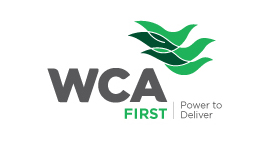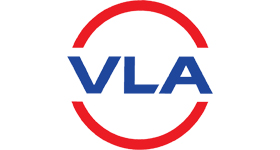New Findings on Biological Factors Predicting Addiction Relapse Vulnerability
Individuals who struggled with past alcohol abuse or drug addiction can get back into addiction treatment after a relapse and remain successful in their overall recovery plan. If you are starting to consider relapse, you may find that you are exposing yourself to possible triggers, even subconsciously. If you find yourself in high risk situations that could trigger a relapse, you should immediately reach out to someone that you can trust and who is supportive of your recovery. Talking through the trigger and enlisting someone else’s help can provide you with the motivation and assistance needed to overcome the trigger and stay sober. Addiction is a long-term condition, like asthma, diabetes, or high blood pressure.
What are the warning signs of a relapse?
Recent positron emission tomography studies have also shown significant positive correlations between the dorsal striatum and drug cue-induced cocaine craving 76, 77. Red Ribbon Recovery provides addiction treatment and mental health care for individuals struggling with substance use disorders. The good news is that this risk can be reduced by prioritizing self-care.
Dangers of Relapse
Furthermore, there are no validated biological markers to identify those at high risk of relapse. However, several new research advances in the past decade have moved the field closer to understanding the biology of relapse risk. The purpose of this paper is to describe these advances and to indicate the goals for developing indices of relapse risk that may be utilized in the clinic. Past trauma is one of the most overlooked risk factors in addiction recovery.
How can someone identify high-risk situations in recovery?
- When you neglect your own physical and mental health, it can increase your relapse risk.
- On top of that, the widespread surge in fentanyl’s inclusion and mixture within other opioids has created a nightmare scenario for opioid overdoses and overdose deaths.
- There are two main types of triggers that can start someone towards the path of relapse.
- Sometimes being back in the same environment can subconsciously trigger a relapse.
- During the earliest stages of emotional relapse, the individual may not consider relapse consciously.
Instead, it can be an opportunity to examine what lifestyle changes, coping skills, and adjustments may be needed to prevent relapse in the future. Upon relapse, some individuals may require inpatient treatment to stop using and manage symptoms of withdrawal. At this stage, working toward avoiding triggers or high-risk situations in which relapse could occur is critical. Therapy may focus on identifying high-risk situations and learning ways to avoid them. It may also involve normalizing occasional thoughts and relapse, and learning methods to let go of them quickly.
However, this can often lead to a potentially life-threatening overdose. Many individuals that struggle with substance use disorder also have mental health struggles, poor coping skills, or simply have gotten used to numbing out any negative emotions. We publish material that is researched, cited, edited and reviewed by licensed medical professionals. The information we provide is not intended to be a substitute for professional medical advice, diagnosis or treatment. It should not be used in place of the advice of your physician or other qualified healthcare providers.
Recognizing Relapse Triggers to Avoid Risky Situations
- Remember, taking care of yourself isn’t selfish—it’s a vital part of your journey to a healthier, addiction-free life.
- The individual who has relapsed may need medical care depending on how much of the substance they consumed.
- Addiction is a long-term condition, like asthma, diabetes, or high blood pressure.
- About 40% to 60% of people who get treatment for substance use disorder have a relapse.
- Detox is important because it helps your body get rid of harmful substances, but it doesn’t teach you how to remain sober.
For 1-year outcomes across alcohol, nicotine, weight, and illicit drug abuse, studies show that more than 85% of individuals relapse and return to drug use within 1 year of treatment 2. Patients are classified here on the basis of their primary drug of abuse (eg, alcohol, opiates, cocaine, marijuana), excluding nicotine, as described in Dodge et al. 6. Patients participated in state-of-the-art, empirically based behavioral and pharmacologic therapies. Proportion abstinent at discharge was assessed based on most recent urine toxicology screening and patient and clinician reports. The latter rates were higher, as non-agonist medications for alcohol and opioids were actively used in treatment in conjunction with behavioral relapse prevention approaches.
Having a sense of direction not only strengthens your recovery but also improves overall well-being and self-esteem. These programs are designed to give you a safe and supportive place to recover while learning how to deal with stress in healthier ways. For someone in recovery, these environments can make staying sober much harder. Now, let’s take a closer look at the most common causes of relapse and how to avoid them. On top of that, the widespread surge in fentanyl’s inclusion and mixture within other opioids has created a nightmare scenario for opioid overdoses and overdose deaths.
They may also minimize previous substance abuse, convincing themselves that it “wouldn’t be so bad” if they returned to alcohol or drug use. The individual will become aware of their internal conflict and desire to use substances as a coping strategy. One of the biggest risks during drug recovery is that someone who is recovering from using a substance willrelapseand begin taking that substance again. To avoid relapse, it is important to understand the risk factors and causes that typically lead to relapse. Understanding these risk factors will help you to avoid the potential risk of relapse during or following recovery. Cultural background plays a significant role in shaping attitudes towards substance use and recovery.
How Cognitive Behavioral Therapy Helps in Alcohol Recovery
This might mean skipping parties, changing your daily life, or spending time with people who Addiction Relapse Risks support your sobriety. Returning home after detox to a life full of stress can feel like too much to handle. That’s why many addiction recovery programs include options like outpatient treatment or residential care. The best way to avoid a relapse is to steer clear of these situations whenever possible.
What Is Addiction Relapse?
Thus, acute stress exposure in the laboratory increases drug craving and anxiety in individuals dependent on opiates, alcohol, nicotine, cocaine, and marijuana 17, 18••, 19••, 20. Similarly, substance abusers report significantly higher levels of drug-related and drug cue–related craving and attentional bias than healthy controls 21–24. Addressing substance abuse, substance use disorders, or alcohol dependence requires honesty, self-awareness, and learning new coping skills. By recognizing your triggers and using effective coping skills, you can navigate risky situations and maintain sobriety in your daily life.
Of course, the goal is to stop using drugs or alcohol completely and not relapse. But when you see your addiction as a chronic disease, you can look at relapse from that perspective, too. In the event of any of these triggers, it can be helpful to check in with emotions and thoughts, recognize any signs of relapse, and implement prevention strategies. Dangerous beliefs, like the idea that one can handle substance use without consequences or the trivialization of sobriety, can significantly undermine recovery efforts.
Recovery is about more than just avoiding drugs or alcohol; it’s about rebuilding your life and finding meaning in each day. When individuals in recovery feel aimless or struggle to find a sense of purpose, it can leave a void—one that substances previously filled. Without structure, goals, or something to look forward to, boredom and feelings of emptiness can set in, increasing the risk of relapse.








